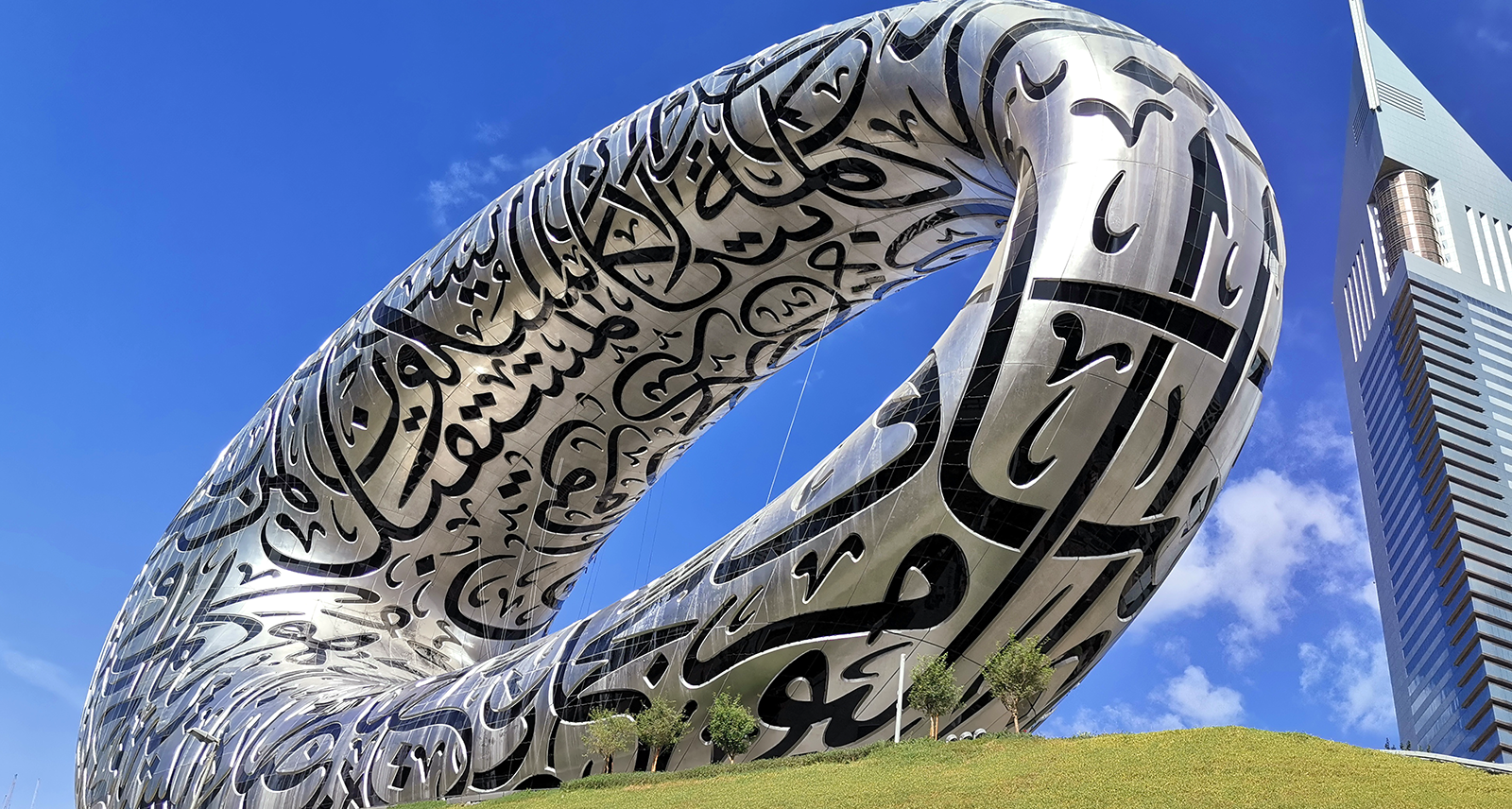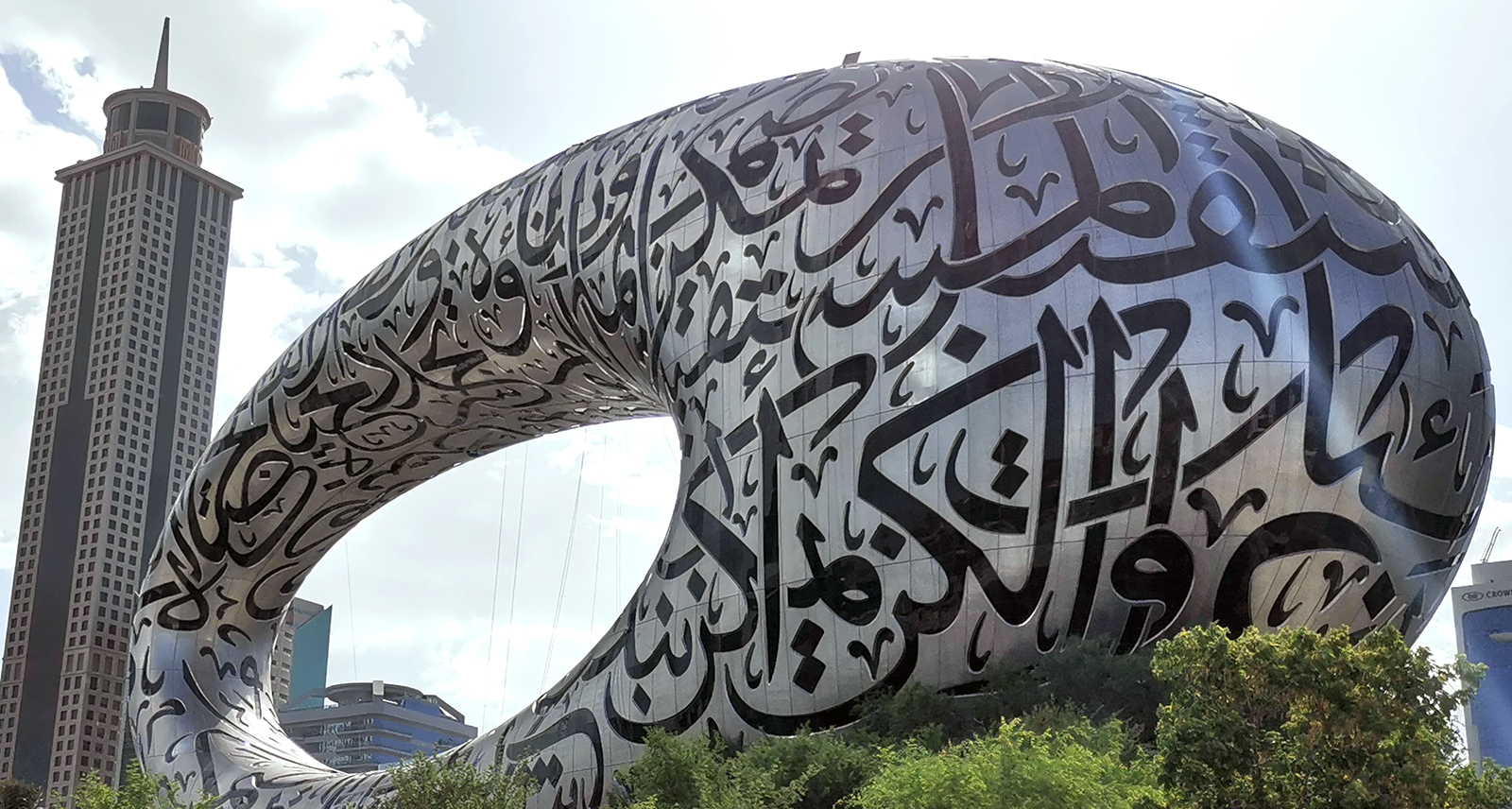Shaping Dubai’s Museum of the Future from the ground up
Case Study

Author: Ruth Badley

The ride down Sheikh Zayed Road from Dubai’s international airport to the city centre gives visitors and returning residents a jaw-dropping glimpse of the Museum of the Future, one of the most complex and challenging buildings ever constructed.
Located in the city’s financial district, the museum’s distinctive oval shape is a triumph of modern design, engineering and construction techniques facilitated by the latest 3D digital technology.
BAM International is the main contractor on the project, from delivering complex design and construction concepts to as-built documentation on handover. The company, a subsidiary of The Royal BAM Group, is active in 30 countries across the globe in all life cycles of construction, from property, civil engineering, and public-private partnerships to mechanical and electrical contracting and engineering.
To ensure every part of the construction matched the boundary-breaking design to millimetre accuracy, BAM utilised Leica Geosystems reality capture solutions for structural verification at every stage and 4D sequencing in Building Information Modelling (BIM).
Standing 77 metres high and covering an area of 30,000 square metres, the museum’s unique shape is defined by architects Killa Design as a silver torus with an elliptical void. A diagrid supports the seven-floor, column-free construction – a structural framework of 2,400 diagonally intersecting steel beams, created using parametric design by BuroHappold Engineering.
The gleaming silver and black hoop sits in an elevated position alongside Dubai’s driverless metro line and within sight of its nearest rival for attention, the mighty Burj Khalifa. The tallest building in the world is learning to live with a new icon on the block.
Some 1,024 individually engineered exterior panels, featuring Arabic script are decorative, functional and meaningful. The black calligraphic shapes form the building’s windows, transforming to a spectacle of LED illumination by night. The poetic inscriptions represent a vision of the future for Dubai, penned by its ruler and the Emirate’s vice-president and prime minister, Sheikh Mohammed Bin Rashid Al Maktoum.

Overcoming unique challenges
The use of 3D laser scanning solutions from Leica Geosystems, part of Hexagon, at every stage of the build and manufacture of the frame and façade was a critical factor in successfully delivering such an ambitious project.
Using a Leica ScanStation P40, BAM could check and share data with the offsite fabricators and others in their supply chain. If any discrepancies existed between scan data and design, they could be rectified before installation, giving everyone confidence that each part of the complex structure had been manufactured to the design and would be the right fit, first time and every time.
Installation was meticulously planned and coordinated to minimise risk and prevent delays. Dubai is prone to high winds, and materials could not be left hanging from a tower crane in the centre of a busy city for long periods of time.
BAM’s Digital Construction manager, Derek Bourke said, “We worked to a ‘just in time’ delivery schedule, so using 3D laser scanning gave us the certainty that every component arriving on site would be installed as per the design.”
“Brackets for more than 1,000 separate panels were put on the building by the steel subcontractor. Using the long-range ScanStation P40 survey-grade laser scanner together with Leica Cyclone postprocessing office software, we knew they were going to fit, with no hold-up for rework or modifications required. That alone allowed us to meet project deadlines and milestones. Being able to identify problems offsite, in advance of installation is a huge cost and time-saving benefit for any main contractor.”
“We used the ScanStation P40 from the moment we came to the site to confirm the size of the openings in the ground for the pile caps. We also scanned to verify the locations for the holding down bolts for the diagrid and then shared that information with our fabricator to make any adjustments. The tolerance on this structure is in millimetres, so using the laser scanner for as-built verification was a major benefit.”
Local support and interoperability aids progress
A highly efficient cascading system of onsite training was initiated by Leica Geosystems’ technical support team based in Dubai.
Eoin Ryan, BIM Co-ordinator for the Museum of the Future, said, “We adopted a train the trainer approach and our site surveyors were all trained with help from Leica Geosystems. Our team passed their expertise down the line, with further support only a phone call away if we had any questions or queries. The response we had from the Dubai team was outstanding and was instrumental in helping us put workflows in place for our site engineers to use themselves.”
“We found the ScanStation P40 laser scanner extremely user-friendly and straightforward. Once the team were shown how to use the solution, it was a seamless workflow - from onsite scanning to registration in Cyclone and any third-party software we needed to use,” added Ryan.
BAM is an existing user of Leica Geosystems solutions and selected the ScanStation P40 because the shape of the building required scanning from a distance, both externally and internally. Registered data could be linked directly to the 3D model design using Cyclone software and exported in a format easily shared with subcontractors for coordination and checking purposes.
“We scan mainly through known control points so at the click of a button we can transfer the data from the ScanStation P40 and import directly into Cyclone. We can see what we scanned already, clear out any extraneous point cloud ‘noise’, and the model is available to use straight away,” said Ryan.

Professional highlight
The BAM team have had a direct hand in creating the visual impact of the Museum of the Future. Watching it develop and grow from the initial mobilisation onsite right through to completion and handover is a career highlight.
Bourke commented, “It’s an iconic building in a city of several iconic buildings, and I am proud of my involvement, the BIM implementation and 3D model development. Everything has worked in the way we intended it to work, and it has been a great success.”
The curves, shapes and round edges of the structure present a one-off set of challenges for MEP work (mechanical, electrical, and plumbing), but Eoin Ryan believes the use of laser scanning technology is an essential requirement for all building projects, whatever the size and complexity.
Ryan said, “I probably won’t ever work on anything like this again, but based on my experience, it doesn’t matter what size job you have, or whether, according to the requirements, you choose a ScanStation P40, a RTC360 or a BLK360 - a 3D laser scanner gives you the results you need and I would insist on it in the future.”
Living up to the metaphor
The Museum of the Future — one of the most advanced buildings in the world — exemplifies the use of innovative 3D digital design and construction methodologies to collaboratively design, construct and document building projects for increased efficiency and accuracy verification.
It also reinvents the concept of a museum that displays ancient artefacts. Through exhibitions, immersive experiences and research promotions, the Museum of the Future will explore the threats and opportunities to the health and prosperity of the planet and act as an incubator for new ideas, technology and projects.
The known and the unknown are implicit in the architect’s design, with the solid part of the structure representing current knowledge and the void symbolising what we have yet to discover.
Over seven open-plan floors, the content will focus on futuristic concepts of outer space resource development, ecosystems, and bioengineering. One floor is specifically designed to encourage children to become ‘future heroes’ by exploring and solving humanity’s challenges. A 400-seat auditorium and several food and beverage areas serving lab-made meats and other innovative products are planned.
The museum has achieved LEED Platinum status (Leadership in Energy and Environmental Design). It is equipped with advanced building control solutions and recycling systems, and generates its own renewable energy from sunlight. The museum will restrict single-use plastic and encourage the use of public transport by providing limited parking spaces. Charging points for electric vehicles will be available to Museum visitors.
Created for the Dubai Future Foundation, the Museum of the Future builds on the list of immersive exhibitions designed for the World Government Summit, a global platform dedicated to the future of public service, held each year in Dubai and previously focusing on future technology, such as AI, in diverse sectors such as government services, healthcare, climate change, and food security.
























